Compositional research. Improvisational methodology. Experimental pop.
Don't wanna be here? Send us removal request.
Text
Monday, February 17, 2025: Five months ago today, Corduroy Institute convened at the Bancroft Laboratory of Auditory Sciences to record our first jam since July of the previous year. We set up an array of video recording devices to capture the proceedings as we added further improvisating atop the preceding Corduroy 75 jams.

We unexpectedly returned to our traditional methodology of recording a rhythmic layer involving a drum machine and bass followed by a second melodic layer of guitar and synth. The Squier Jazz Bass was used for the first time, while the MC-707 served as the timekeeping device. This video captures the proceedings:
youtube
For the second melodic layer, W. Ruiz returned to the Roland V-Synth while S.A. Morin processed his Bass VI using the Electro-Harmonix Mel9 pedal's High Choir setting. The interaction of these tones took the initial blues-adjacent rhythm to more heavenly domains. This video captures the proceedings:
youtube
This performance marked the moment wherein all 24 tracks on the Corduroy 75 project on our Tascam Portastudio were now completely full. Now, we invite you to explore these two improvisations in full—plus our ongoing sonic research—on our YouTube channel.
#corduroy institute#experimental pop#experimental music#independent music#bass vi#home recording#youtube#home studio#roland v synth#v synth#mel9#jazz bass#squier jazz bass#j bass#synth#sampler#roland mc 707#mc 707#improvisation#improvised music
0 notes
Text
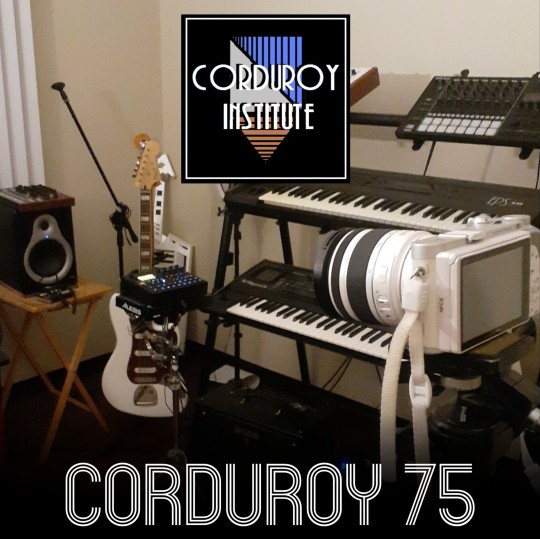
https://youtube.com/playlist?list=PLtfdKG47R7jDo-0KVyz5fuWLeedR7mwxi&si=7xIFfXBmjsuIYu2J
July 5, 2024: On this date, Corduroy Institute convened to record for the first and only session of the year. We entered the studio with only vague notions of library music and beat tapes, undertaking to create several consecutive improvisations rather than our usual multitracked pop songs.
We only employed the Bass VI, the Elektron Digitakt, and the Ensoniq EPS 16 Plus during this session. Despite this seemingly limited set of tools, each jam effortlessly evoked its own distinct mood. We also quickly realized that recording onto the same Tascam project allowed us to implement a unique amalgamation of Frank Zappa's principle of xenochrony with the lessons gleaned from dub production techniques.
The four improvisations, our commentary, and several xenochrony experiments were all captured on two cameras, and in subsequent months we released all of the videos contained on this playlist. This date marks a unique repositioning of Corduroy Institute, taking us from being a sonic research institution that operates out of the limelight and instead placing our entire process in front of all our fellow sonic researchers. Today, we welcome your peer review.
#corduroy institute#experimental pop#experimental music#independent music#bass vi#eps 16 plus#digitakt#improvised music#improvisation#tascam#beat tape#library music#xenochrony#minimalism
0 notes
Text
February 23, 2025: Three months ago today, Corduroy Institute overdubed melodic content onto our latest experimental pop improvisation. The proceedings were captured on video and are now available for your consideration as "You'll Still Be Staring Down At The Floor, Literally Shoegazing — Corduroy 76 Layer 2" on the world's foremost video platform.
youtube
The cameras first had to be repositioned to more effectively document the spirit of the second improvisation of the night. The Canon Vixia camcorder remained fixed on S.A. Morin and his Telecaster, though the angle was shifted to a lower position. Meanwhile, the Samsung NX300m was repositioned directly above the Roland MV-8800 to provide a more precise perspective on W. Ruiz's performance. Finally, a smartphone was placed above the pedalboard to capture the footwork of the impending shoegaze proceedings.
With the cameras all set to record, it was time to employ some novel sonic textures to create a hitherto unexpected mood atop our extant rhythm track. The centerpiece of the shoegaze performance was the Boss Feedbacker/Booster FB-2 pedal. As S.A. Morin later stated, "Instead of it just being the note, I wanted it to be the note within this warble of feedback to give it more of an all-encompassing feel."
The MV-8800, in contrast, featured W. Ruiz's first foray into finger drumming melodic content on 4x4 pads. This layout made selecting the proper notes quite difficult. Luckily, the Lo-Fi Processor effect turned the pitched brass sample into an abstract aliasing texture whose character was less about the exact notes than it was about the overall sense movement.
Once the take was finished, we were effectively done with the session. It would be exactly on month before we convened in the studio again. For now, however, you can enjoy this video document of our performance. Its audio, compiled from our cameras' on-board microphones, captures the Telecaster strumming in a manner quite distinct from the fully effected signal recorded by our Tascam Portastudio. Consider this a true-to-life vantage into Corduroy Institute's recording environment.
#corduroy institute#experimental pop#experimental music#shoegaze#independent music#telecaster#roland mv 8800#mv8800#lo fi#noise pop#indie#Youtube
3 notes
·
View notes
Text
February 23, 2025: Corduroy Institute prepares to overdub melodic content atop the latest experimental pop improvisation, Corduroy 76. Novel sonic textures would soon be employed to create a hitherto unexpected mood atop our MV-8800 and Squier Jazz Bass rhythm.
For the first time in years, S.A. Morin turned to his triple pedalboard setup and proceeded to make substantial modifications. He first opted to omit the third board which featured units with an Effects Out component (the EHX Superego Plus and DOD Rubberneck). This meant that the second board, centered around the EHX Tri Parallel Mixer, would feed its signal out into the Tascam entirely in mono. He then replaced the Boss HM-2 with the MXR Blue Box on his gain-centric board. This would be the first time this unit would be used on a session.
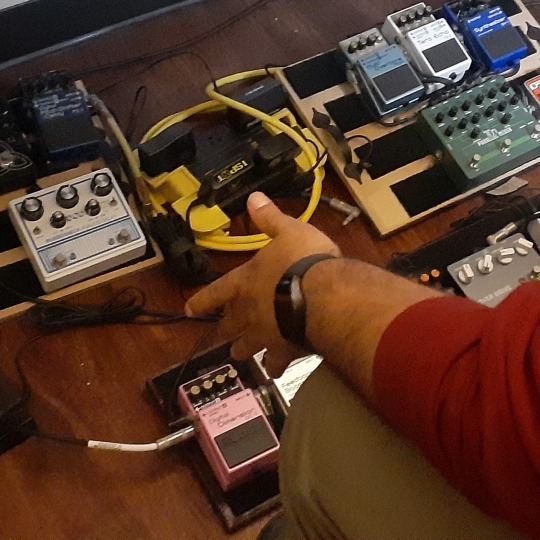



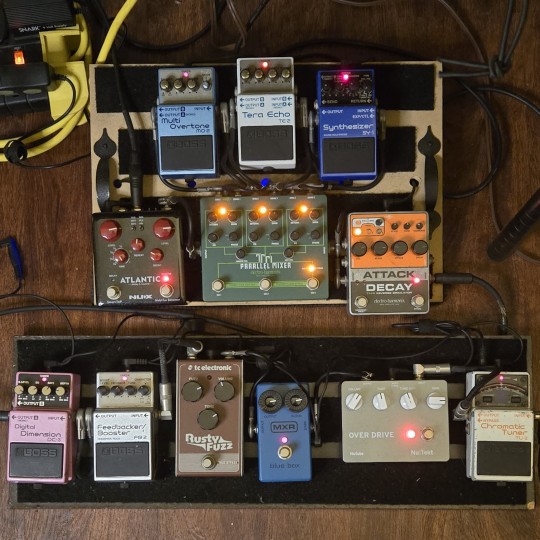

W. Ruiz returned to the MV-8800 for his melodic contributions, though he needed a sound that would not clash with the all-enveloping guitar tone. Synth pads were out of the question. He located an original patch derived from a field recording of a brass instrument, and he treated it with the MV's Lo-Fi Processor effect. This generated a sound whose unique aliasing added an alien textures which could swirl above the guitars.

Once the cameras were readjusted, we would be ready to record our melodic layer. A full video of this performance is forthcoming.
0 notes
Text
Saturday, April 17, 2021: Four years ago today, Corduroy Institute recorded "In This Confessional," the last song on our Eight/Chance/Meetings album. Simple Minds and Marillion were chosen by a random number generator as our point of departure.

We began by recalling a Eurorack loop from March captured on our Boss RC-5. The pedal's internal drum patterns were activated and shut off using a Boss FS-5U switching unit. The looper also served as the MIDI master clock whose timing controlled the tempo of the Microfreak's arpeggiator which sent Slice and Dice commands to the E-MU ESI-4000. This, in turn, had a MIDI Thru port which sent clock data to the Volca Drum whose waveguide resonator sounds were given a bit of heft by the Behringer RV600 Reverb Machine.



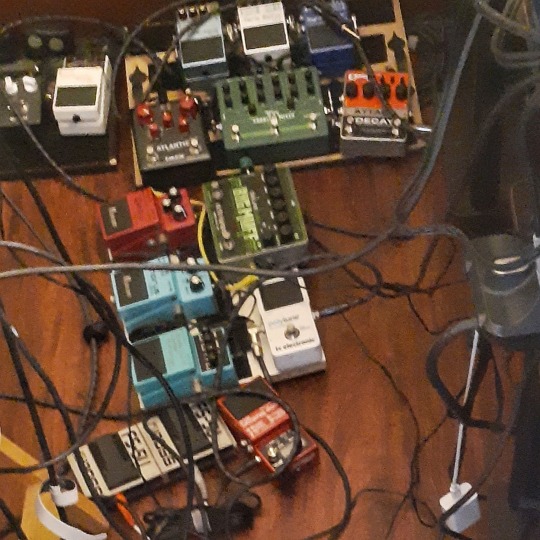
After wiring these connections, we improvised a non-stop seven minute drum and loop performance. We then proceeded to add harmonic elements. S.A. Morin picked up the Bass VI for the first time since December of 2020. The Microfreak was also properly employed as a synthesizer for the first time since October of 2019.
After improvising atop the rhythm, we discovered that only the Bass VI part had been recorded onto the Tascam 2488neo. Lost forever was the interplay of the moment. Nevertheless, a new Microfreak improvisation was created. This performance was captured on video, an opportunity rarely afforded to us before 2022.

Next, lyrics were made using phrases from the B. Davis Archive along with extensive cutouts from a local publication found that very morning. Both members of the institute prepared lyrics together, pleasantly recalling the methodology of our 2018 EPs.
In the evening hours, we began to sing. An edit was made on the final stanza, and a substitution was spliced in from a set of words collected in February. The lyrics were sung by one member, and we both added backing vocals consisting primarilly of alternating single-note drones. By midnight, a rough mix was complete.
"In This Confessional" is a definitive peak in our discography and we invite you to revisit it today.
#corduroy institute#experimental pop#experimental music#independent music#eight/chance/meetings#in this confessional#microfreak#Volca drum#esi-4000#vintage sampler#looper#simple minds#marillion#empires and dance#misplaced childhood#improvised music#Bandcamp
0 notes
Text
youtube
February 23, 2025: Corduroy Institute records a new experimental pop improvisation. Convening at the Bancroft Laboratory of Auditory Sciences scantly a week after finishing a fifth jam for Corduroy 75, we set up our cameras and immediately went to work on Corduroy 76.
For the first time, the Roland MV-8800 was brought into service as a musical instrument. However, W. Ruiz used it in a way that scarcely hints at its potential. By pressing the unit's Hold button, a short drum loop he added to the machine's hard drive in 2022 was allowed to play indefinitely. Additional percussion was added via the drum pads, but no sequencing took place.
The pivotal element of this MV-8800 performance was the active manipulation of its RE-201 Space Echo effect. The presence of control knobs right above the drum pads allowed for instant control over what might be Roland's most vivid emulation of the classic tape delay effect. Teetering on the edge of self-oscillation, this is the closest we've veered to the noise-as-instrument ethos since the Volca Drum sounds on "In This Confessional" from 2021.
For the bass portion of the rhythmic improvisation, S.A. Morin returned to the Squier Jazz Bass employed during the previous week's improvisation. The dub effects on the drums encouraged him to embellish the bass with delays of its own. Both the Boss DM-2w and the NUX Atlantic were used for their respective delays, and the resulting performance was a loping bass pattern which was described as "Nice and simple."
Was was to come, however, would be anything but.
#corduroy institute#experimental pop#experimental music#independent music#jazz bass#squier jazz bass#j bass#mv-8800#roland mv-8800#space echo#re-201 space echo#dub#nux atlantic#boss dm 2w#analog delay#digital delay#instrumental#improvisation#improvised music#Youtube
0 notes
Text
March 27, 2018: Seven years ago today, Corduroy Institute recorded our third song and the first to be ever made at the Bancroft Laboratory of Auditory Sciences. This piece would eventually become "Prayer," the third song on our first EP.
On that fortuitous occasion, W. Ruiz took his Electribe ES-1, Arturia Minibrute, and Boss RE-20 Space Echo to the B.L.A.S. where a Tascam 2488neo Portastudio multitrack recorder stood alongside S.A. Morin's Bass VI, Telecaster, effects pedals and drum pads. This session was characterized by layers of improvised music, much like our first two pieces. However, several unique developments set it apart from the first pair of meetings.
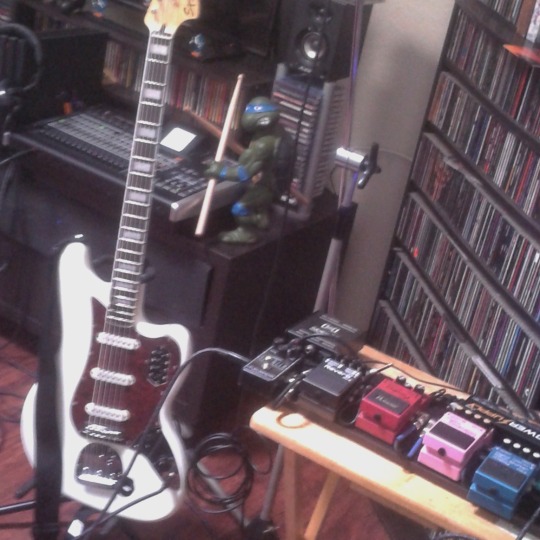

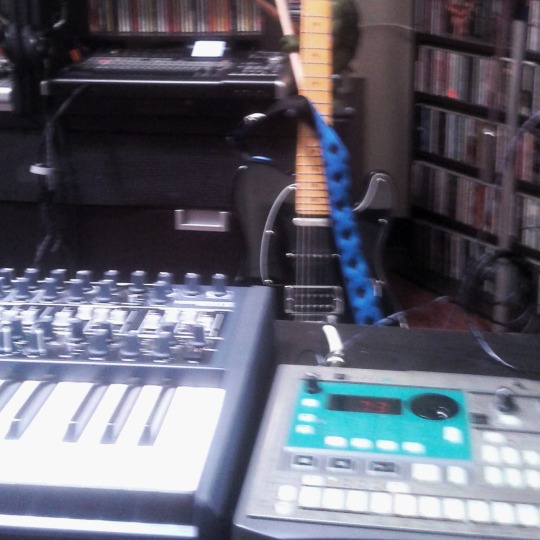
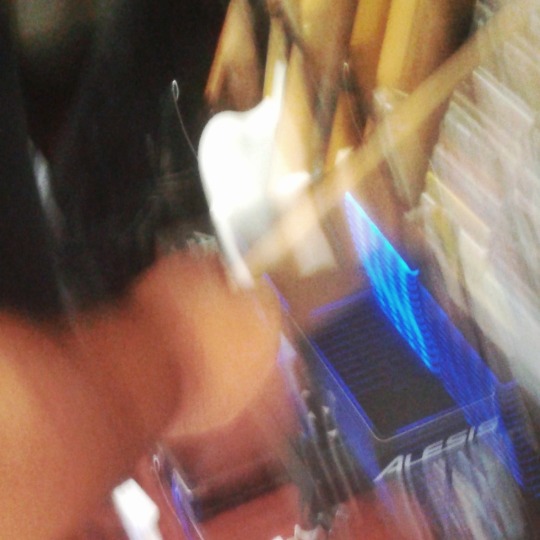
First, it would be the first time we wholly omitted a performance track from the final mixdown. The synthesizer part, which entailed W. Ruiz playing on the Minibrute proceeded by a Boss RE-20 Space Echo, was deemed unnecessary. This use of omission in the service of the song would become a key part of our songcraft method.
Second, the lyrics crafted that day were extensively edited before the final vocal performance took place. Some of the day's stanzas were excised and others altered later on. No other piece of music we have ever recorded was subjected to as many ex post facto lyrical edits as this.
Third, the March 27 vocals barely appear on the released track. Most were excised, and what remains was reversed and used as a textural element. The song's main vocals would not be recorded until June 25, 2018. This was a departure from the first two songs, all of which were finished in a day. This three-month hiatus foreshadowed the gaps between recordings which have characterized our latter work.
Finally, the track used extensive muting of the Electribe ES-1 on the Tascam. This dynamics-enhancing technique continues to be relevant today. Our most recent album heavily employs this process, and we hope you continue to follow the compositional progress on our latest batch of songs. For now, you can enjoy "Prayer" on The Gedge Journal of Dalliance Studies, Vol. 1.
Download codes available upon request.
#corduroy institute#experimental pop#experimental music#independent music#bass vi#bandcamp#home recording#effects pedals#telecaster#electribe es 1#korg#minibrute
0 notes
Text
Monday, February 17, 2025: Corduroy Institute creates an improvised layer of melodic content for Jam 5 of Corduroy 75. This marked our first recording of multitracked musical material since the summer of 2023. Today, a video document of this event is available with the title "The Number Seventy Five Song in Heaven - Corduroy 75 Jam 5 Layer 2."
youtube
For his synth work, W. Ruiz turned to the Roland V-Synth rather than to the Ensoniq EPS 16 Plus. He located a patch called PERSIANAS. Its basic sound consists of a sample of the Korg Monologue with shimmer reverb from Corduroy Institute's second song, "Youth." This sample is frequency modulated by a drum loop recorded at a local rehearsal space in late 2019.


S.A. Morin's melodic contribution involved returning to the Bass VI but processing it with the Electro-Harmonix Mel9 pedal. He chose the High Choir setting, one of the unit's more infrequently used Mellotron colorations. His signal chain also involved using the NUX Atlantic for both delay and reverb.

With our instruments ready and four cameras poised to capture the performance, we began the improvisation. A sort of call and response pattern developed between the previous layer's Squier Jazz Bass, the Bass VI-Mel9, and the V-Synth. Eventually the pattern broke and freeform improv took over.
W. Ruiz took advantage of the V-Synth's control surface by mainly manually modulating the FM amount while also occasionally reaching for the D-Beam and Time Trip pad controls. S. A. Morin, for his part, went on to surmise that he himself "kinda lost it there."
Full video available now.
#corduroy institute#experimental pop#experimental music#bass vi#home recording#roland v synth#v synth#fm synthesis#mel9#ehx mel9#mellotron#home studio#independent music#Youtube
0 notes
Text
March 20, 2022: Three years ago today, Corduroy Institute held a special recording session at a location far from our usual studio spaces. Our use of this environment was intertwined with a concept S.A. Morin had posited only days earlier: Exploring "Modern Classical" in the context of the electric guitar.
His conception entailed "composition for guitar but not endless twenty minute crescendos." The implication was to explore repetitive structures alongside the type of quasi-orchestral textures which can now be created with guitars. This stood in contrast to the loud amplified guitar orchestras employed by composers in the latter part of the 1970s.
A very intrigued W. Ruiz compiled a list of the specific effect pedals in our arsenal which could enable these kinds of possibilities. That very evening, we went so far as to even purchase a Boss AC-3 to assist us in our pursuit of this new direction.
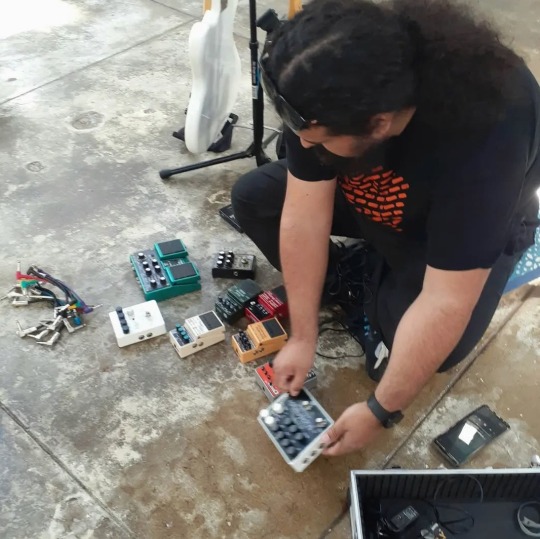
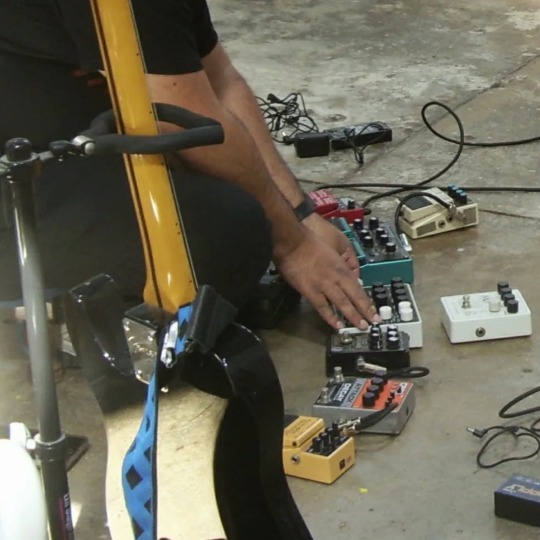
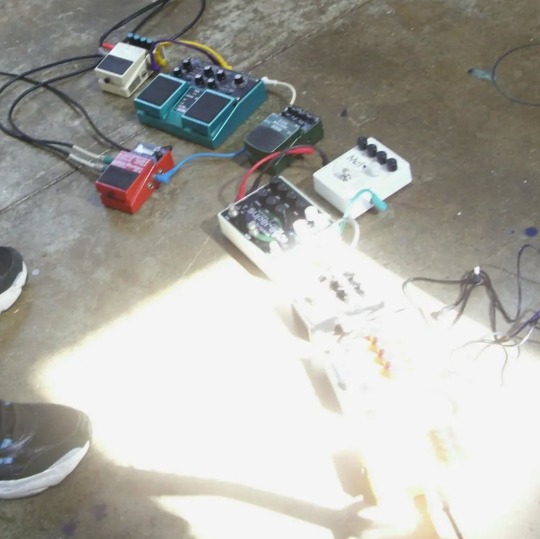
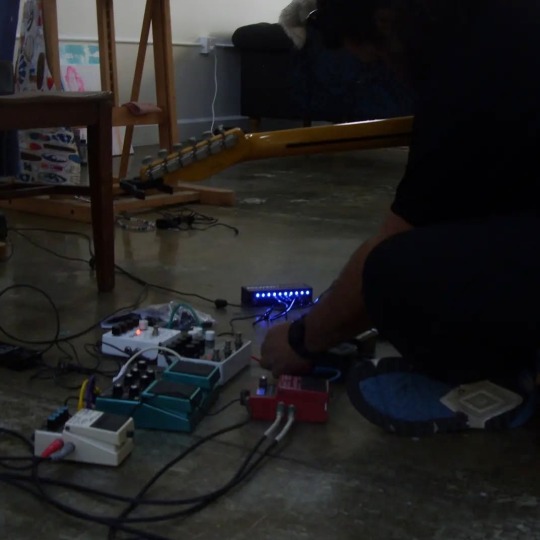
We have released few specific details about the occasion over the years. Now, we can reveal that the session yielded a still-unrelesed vocal piece called Corduroy 70. We also made the experimental plunderphonic piece "No One Ever Knows" from Take the Train to Manchester. Finally, on that day we recorded the principal vocals for "[A] Girl Named Philosophy" and " Say Something Gentle."
#corduroy institute#experimental pop#experimental music#take the train to manchester#modern classical#say something gentle#a girl named philosophy#no one ever knows#Bandcamp
0 notes
Text
Monday, February 17, 2025: A month ago today, Corduroy Institute convened at the Bancroft Laboratory of Auditory Sciences to record our first jam since July of last year.
youtube
The Tascam Portastudio 2488neo's Corduroy 75 project still contained four blank tracks. For reasons unknown, we decided to record onto these empty spaces rather than begin a new project altogether.
In another peculiar choice, we opted to forego the subversive methodology of the previous Corduroy 75 jams—single takes of drums, bass and synth. We instead returned to our traditional methodology—a rhythmic layer involving a drum machine and bass followed by a melodic layer of guitar and synth.
Our drum machine today would be the MC-707 rather than the Digitakt. Unused since 2022, the Roland unit still contained custom sounds created earlier in this decade. W. Ruiz loaded a set of drums he synthesized using the unit's XMOD cross modulation and then established a simple rock pattern, augmenting the rhythm with the vaunted LOFI Compress effect.
During dinner, we had decided that this jam would be the right moment to introduce a brand new element to the Corduroy Institute story: the Squier Jazz Bass. It would be the first time we used an instrument other than the Bass VI for a bassline since our fourth song, "I'm Not Saying That," which used a Tobias Toby Standard IV.
With our instruments ready and four cameras poised to capture the performance, we began the improvisation. W. Ruiz mainly focused on adding additional percussion, modulating the filter depth on the LOFI Compress effect, and varying the master reverb levels. S. A. Morin, for his part, arrived at a progression quite unusual for Corduroy Institute—something akin to the blues, almost.
Full video available now.
0 notes
Text
Sunday, February 16, 2025: A month ago today, Corduroy Institute convened at the Bancroft Laboratory of Auditory Sciences with the intent of recording for the first time since July of last year.



We set up an array of video recording devices to capture our musical improvisations. This was to be our most elaborate setup yet, allowing us to document the musical proceedings with more varied angles than before.
First, however, we re-listened to the four improvisations recorded during our last session back in 2024. Since S.A. Morin hadn't heard these pieces in ages, he found their varied moods quite refreshing. New possibilities swirled as we discussed where this material, some older unreleased pieces, and any future pieces could go.
Nevertheless, the immediate future pointed to a new jam. A bite to eat, a social retreat, and then it would be time to work. A future communique awaits.
0 notes
Text
February 10, 2025: A month ago today, Corduroy Institute restored the Bancroft Laboratory of Auditory Sciences to operational order.
The recording studio had gone unused since the Corduroy 75 session that yielded four jams on July 5, 2024. A later proposed session had to be halted as speaker issues prevented us from even monitoring our work. Dust and extraneous items then began accumulate. Slowly, the inertia took its toll on both the space and our own creative possibilities.
Therefore, exactly on month ago, we spent several hours undoing the damage. Items were moved, items were removed. Cables and boxes shifted position. Dust and dirt were swept away.



The speaker situation had not improved. Our monitors are effectively bricked as the main one fails to power on and the second one cannot receive any signal since it is wholly dependent upon the first. Manuals and forums yielded nothing actionable.

Pragmatism, however, reigned supreme. In lieu of two well-distanced speakers, a simple USB-powered Bluetooth speaker was pulled into service. The unit was connected to the Tascam Portastudio 2488neo and it produced sound. Ideal? Perfect? Flawless? Not at all, but it completed the last part of the puzzle.
The studio was back online.
0 notes
Text
Friday, March 7, 2024: Today is the first Bandcamp Friday of the year and the website shall therefore waive their standard platform fees, passing all revenues directly to independent artists like ourselves. Corduroy Institute encourages you to take the opportunity to support our experimental pop endeavors.
CorduroyInstitute.bandcamp.com
We want to remind our followers that our Bandcamp offers a limited run of Take the Train to Manchester shirts for 35 USD plus shipping. We trust you will appreciate the aesthetic value of this attire which features the artwork to the finest experimental pop album of 2023.
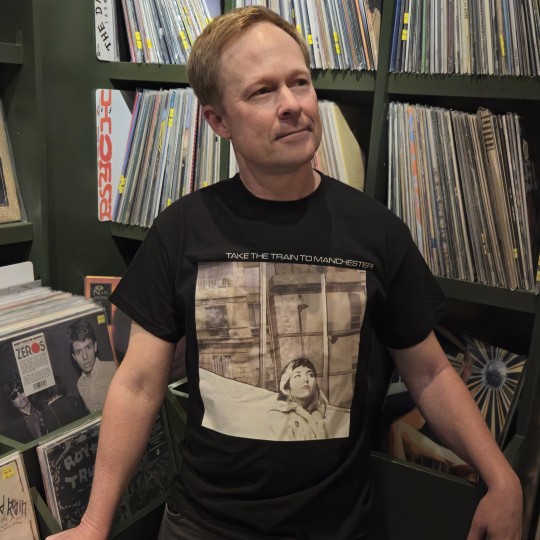

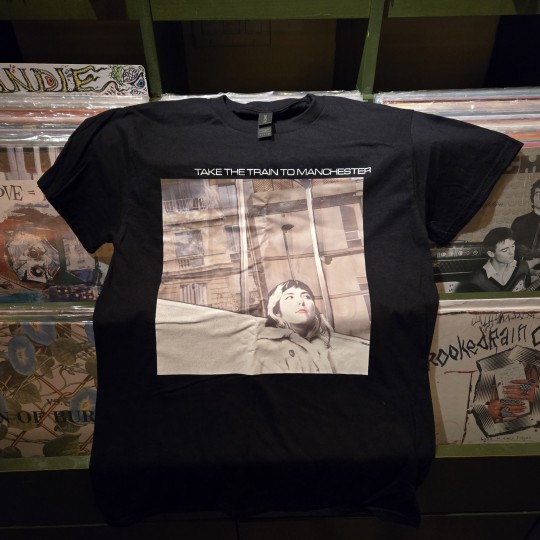
In addition, the entire Corduroy Institute discography is available digitally at the following rates:
Compilations are valued at 10 USD
LPs are valued at 8 USD
Mini-LPs are valued at 5 USD
EPs are valued at 4 USD
Singles are valued at 1 USD
Your continued support for our non-profitable institution allows us to continue to pursue all aspects of sonic research.
#corduroy institute#experimental pop#experimental music#independent music#take the train to manchester#band shirt#band merch#artists on bandcamp#bandcamp#bandcamp friday
0 notes
Text
Friday, July 5, 2024: Eight months ago today, Corduroy Institute subverted the foundations of our methodology by embracing the principle of xenochrony. Our latest video features the final moments of audiovisual content we captured on that distant summer night.
youtube
The footage begins with a discussion of the merits of the evidently songworthy Jam 4. We reference the spectrum of prog's possibilities, ranging from Can basslines to full-on song cycles, as both ingredients and end points. Then, we provide one last glimpse at how xenochrony allowed us to shift between musical explorations.
With four different improvisations inside the Tascam Portastudio 2488neo, we had twenty faders' worth of moments that could collide to create novel musical experiences. W. Ruiz held the Samsung NX300m mirrorless camera above the Portastudio as S.A. Morin manipulated the faders to embellish Jam 4 with all manner of alien textures from the previous three jams. The camera signal stalled a bit, then xenochrony gave way to live dub mixing.
Silence, then Jam 3's minimalist finale emerged as a coda to our explorations.
And thus concluded our only session of 2024.
#corduroy institute#experimental music#Tascam#Portastudio#live dub#dub mixing#xenochrony#samsung nx300m#Youtube
0 notes
Text
March 3, 2018: Seven years ago today, we recorded "Youth," the second song we ever devised using what was becoming Corduroy Institute's signature methodology.
youtube
On that Saturday, S.A. Morin returned to the location which would eventually be christened the O'Higgins Laboratory of Recorded Sound. There, a makeshift recording setup had been established around a Tascam DP-24SD Portastudio multitrack recorder.

Just as on Tuesday's session for "Fear Is Your Choice," S.A. Morin's tools consisted of a portable pedalboard and the Squier Bass VI. This time, however, W. Ruiz wielded an array of interlinked machines. His Korg Monologue was processed by a Hall of Fame 2 shimmer reverb, while the Roland SP-505 went through an Electribe ES-1. There are at least two layers of drums (the glitch-centric one being audible at the end of the song) along three layers of Bass VI within the multitracks.

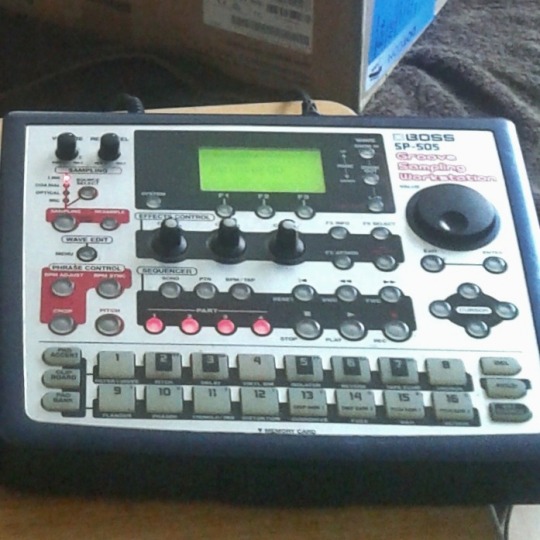

After recording our improvisations, we made stanzas using cutups from the B. Davis Archive and proceeded to sing. On the final stanza, we recorded ourselves independently reading the words plus part of the chorus, then we collated these takes by alternating between them on the Tascam.
The recording we made on that occasion seven years ago today became the second song on the first EP we ever released to the public. Bandcamp download codes for the EP remain available upon request.
https://corduroyinstitute.bandcamp.com/album/the-gedge-journal-of-dalliance-studies-vol-i
#corduroy institute#experimental pop#youth#sp-505#korg electribe es-1#electribe es-1#electribe#pedalboard#guitar pedals#tascam#portastudio#experimental music#Youtube
0 notes
Text
February 27, 2018: Seven years ago today, we recorded the first song we ever constructed using what has become Corduroy Institute's signature methodology.

On that auspicious occasion, S.A. Morin arrived at the location which would subsequently be christened the O'Higgins Laboratory of Recorded Sound. There, W. Ruiz had prepared a makeshift recording space centered around the Tascam DP-24SD Portastudio multitrack recorder.
W. Ruiz had arranged an array of machines consisting of the Moog Sub Phatty, the Volca FM, the Electribe ES-1, and the Volca Beats. S.A. Morin carrier a portable pedalboard and his newest acquisition, the Squier Bass VI. This six string instrument has become our unofficial third member, appearing on every single song we have ever released.
Once we recorded three layers of multitracked improvisations, we consulted the B. Davis Archive for the first time to craft our lyrics. We made the song's stanzas using only cutups taken from across the spectrum of print media. Then we sang these words through the TC Electronic Echobrain analog delay. With that, our first session ended.
The recording we made on that occasion seven years ago today is now known as "Fear is Your Choice." It became the first song on the first EP we ever released to the public. Bandcamp download codes available upon request.
#corduroy institute#experimental pop#fear is your choice#cut up technique#the gedge journal of dalliance studies vol. ii#cut up method#cutups#collage#songwriting#cut up poetry#experimental music#Bandcamp
0 notes
Text
Friday, July 5, 2024: Corduroy Institute records the fourth and final improvisation of the day for Corduroy 75. Our raw musical performance of this experimental pop song has been augmented with a pseudo-music video comprised of archival footage recorded in the Gaslamp Quarter of San Diego.
youtube
We again returned to the gear we had employed on the previous three jams: the Bass VI, the EPS 16 Plus, and the Digitakt. The latter held a surprise in the form of the rhythmic pattern we used on "You Can Go and Rebuild Your Life," the second song from 2018's The Santiago-Berlin Symposium EP. The samples were different, but the beat was the same. We chose to reuse the pattern as the basis for our fourth improvisation.
Then, as W. Ruiz loaded another one of his custom synthesizer tones on the Ensoniq, he noted how the crisp digital texture was reminiscent of the 1980s Japanese genre known as "City Pop." This sound and the drum rhythm soon led S.A. Morin to a bassline, and within seconds we were ready to record.
As the improvisation begins, the viewer is transported from the comfort of the studio in 2024 to the nighttime grit of the streets in 2022. The shaky Samsung NX300m video footage is sliced, mangled, and repeated atop Corduroy Institute's instant composition to create an immersive three-minute dive into what could ostensibly be called "City Pop."
We hope you enjoy this unique juxtaposition of sound and vision. One final video from our July 5 session awaits: An experimental foray into four-song xenochrony on the Tascam Portastudio.
#corduroy institute#experimental pop#city pop#ensoniq#eps 16 plus#Digitakt#bass vi#san diego#gaslamp quarter#Youtube
0 notes